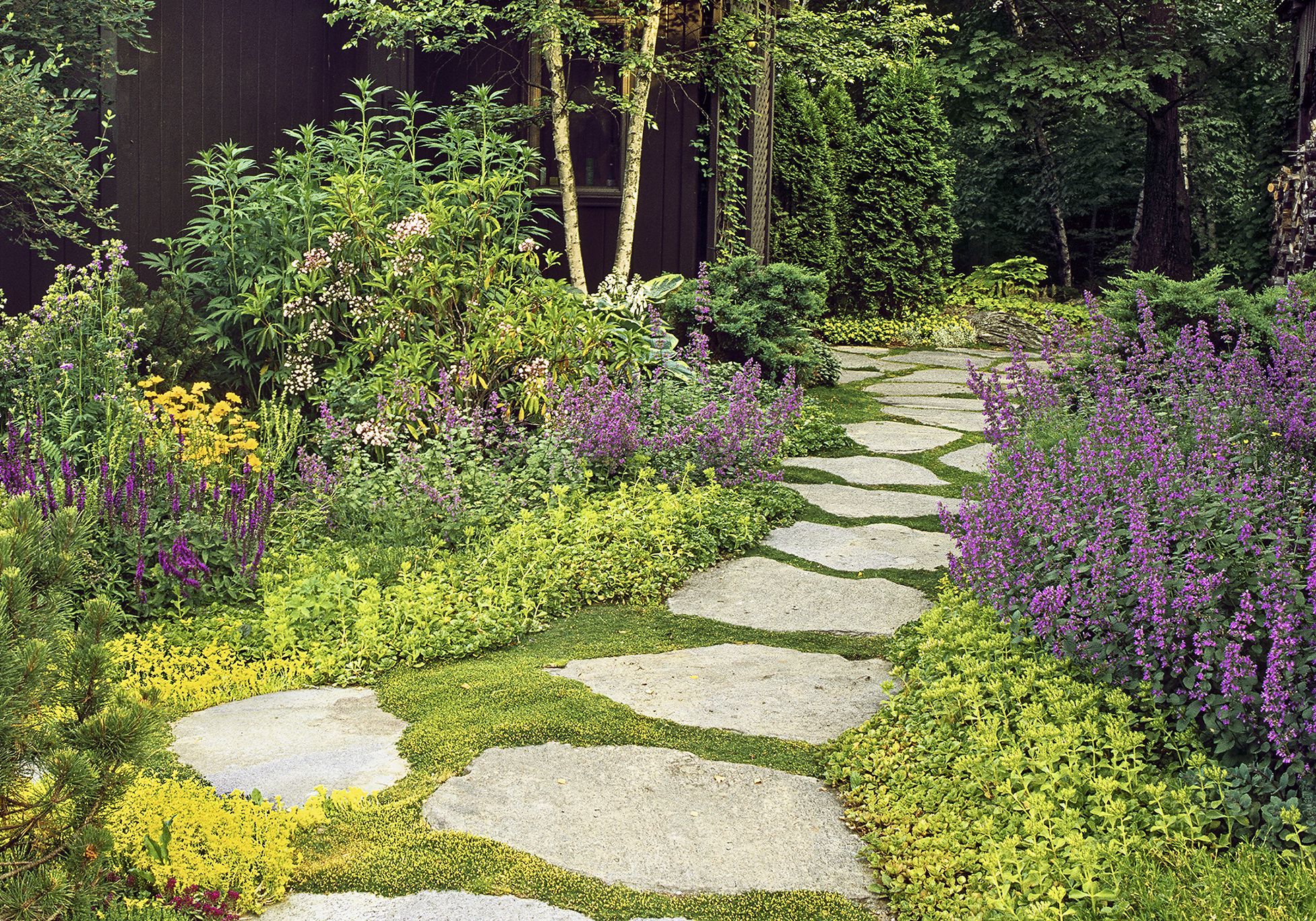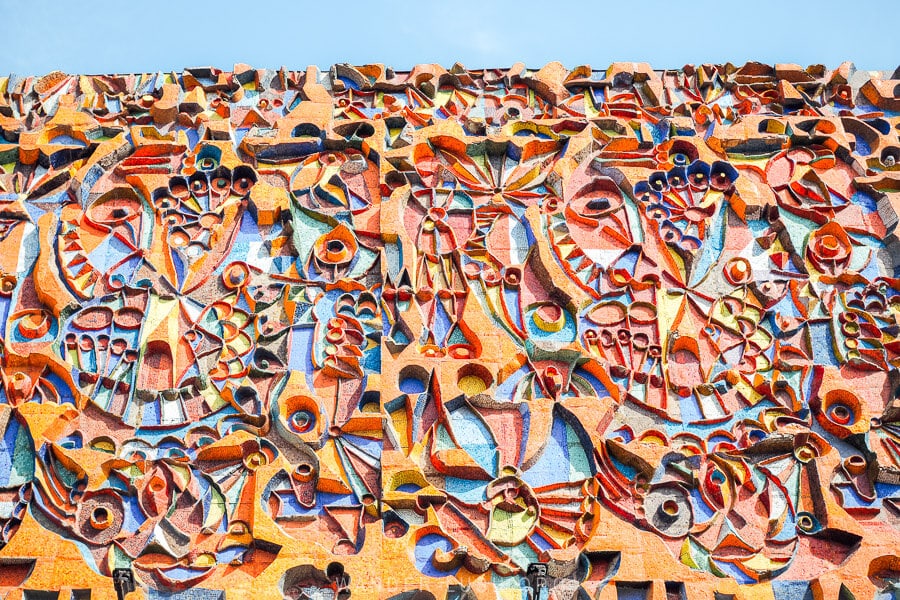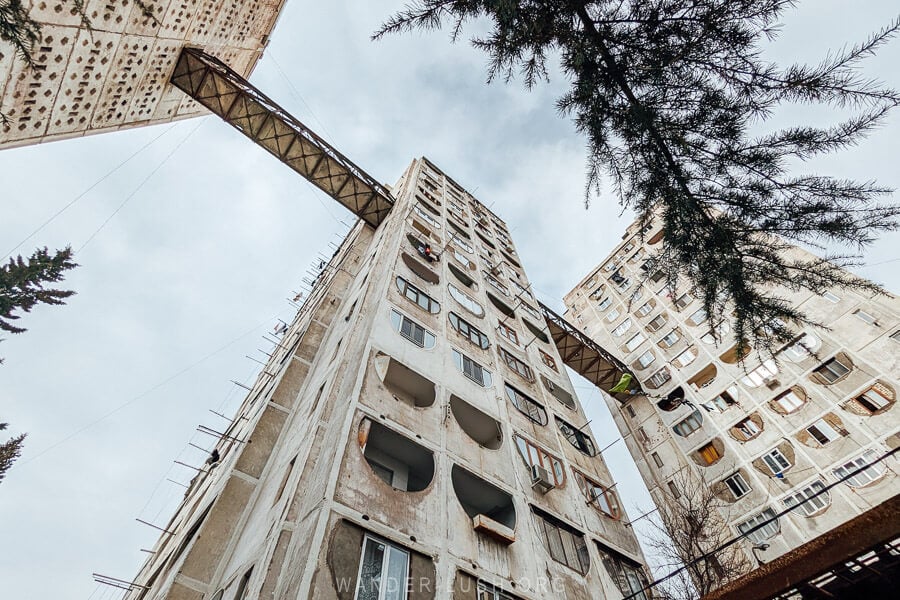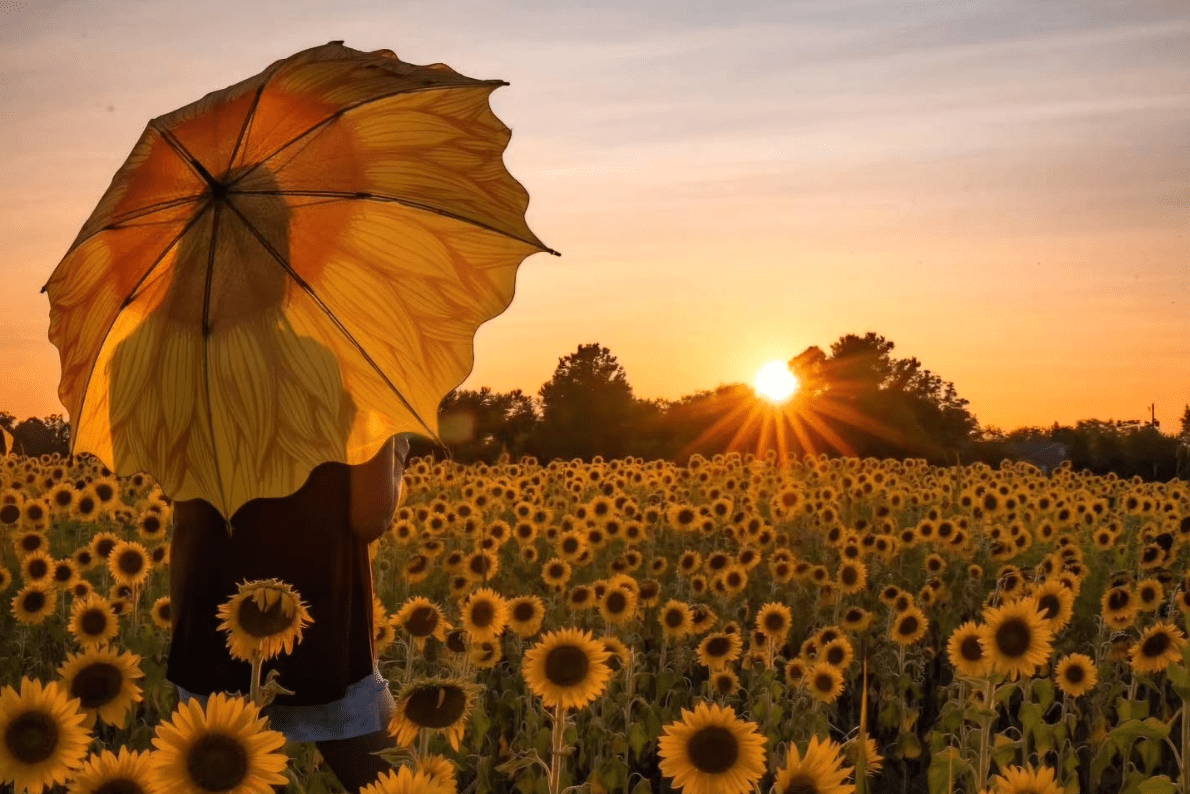
Whether it’s delicate blooms between stepping stones or lush greens creating a border around the garden, ground cover plants do more than add beauty to your yard. The best ground cover plants attract pollinators, like bees and butterflies, and protect soil by preventing erosion and suppressing weeds. They tend to spread quickly and grow in areas where other plants can’t, like in dry shade under a tree or a sunny spot around a water garden.
From fragrant chamomile blooms to tropical ferns, these low-maintenance plants will help keep your landscape happy and healthy. The best part? Most ground covers are perennial plants, meaning they grow back every year and require little pruning.
While ground covers tend to grow and spread easily, keep in mind your USDA Hardiness zone (find your zone here). Also, consider what kind of sun exposure the planting area receives. Full sun is considered 6 or more hours of direct sunlight per day, while part sun is about three. Full shade means an area receives no direct sunlight, or possibly a brief period of mild morning sun.
Hardy Geraniums
This low-maintenance perennial is defined by its vibrant flowers that bloom for months, from late spring to late fall. The petals are often shades of pink, purple, blue or white. Hardy geraniums attract pollinators, are frost-hardy and have the ability to thrive in various soil types and most lighting conditions, from full sun to partial shade.
Zones: 3 to 9
Sun exposure: Full sun to partial shade
Chamomile
This fragrant, perennial herb is known for its delicate white flowers. Choose from an annual (German) or perennial (Roman) variety, and watch this low-growing beauty spread. Chamomile is drought-tolerant, hardy and attract pollinators (especially bees). Fun bonus: The flowers, either fresh or dried, can be used to make tea.
Zones: 3 to 9
Sun exposure: Full sun
Periwinkle
Popular for its charming blue or purple flowers, Periwinkle is a resilient ground cover plant. The flowering perennial can thrive in most conditions; it’s not picky about soil, and although it prefers full shade, it can grow in full sun.
Zones: 4 to 9
Sun exposure: Full shade, but tolerates full sun
Sedge
This grass-like foliage flourishes in a variety of conditions, from wet, shady areas to dry, sunny spots. Many species are low-maintenance, drought-tolerant and have the ability to grow on slopes and difficult terrain.
Zones: 5 to 9
Sun exposure: Part sun to full shade
Blue Star Creeper
This hardy ground cover plant — a great choice for garden borders or between stepping stones — features tiny, star-shaped flowers in shades of blue and purple. It can tolerate foot traffic and isn’t picky about soil. While it prefers part shade, it can also tolerate full sun.
Zones: 6 to 9
Sun exposure: Part shade, but tolerate full sun
Creeping Jenny
With chartreuse foliage, this low-growing perennial plant spreads rapidly in gardens and landscapes. The moisture-loving plant thrives in soggy soil, and can even thrive in fresh water. Expect tiny, yellow flowers to pop up the in spring.
Zones: 3 to 9
Sun exposure: Part to full sun
Lilyturf
It doesn’t get much tougher than lilyturf. Also known as liriope, this fast-growing evergreen perennial has grass-like leaves and clusters of purple flower spikes. Once established, lilyturf is drought-resistant, and it can handle both full shade and full sun.
Zones: 5 to 10
Sun exposure: Part to full sun or shade
Heuchera
Heuchera, also known as coral bells, come in an array of pretty colors ranging from lime green to deepest burgundy and every shade in between. Some types of these perennials tolerate either full shade to part sun, so read the plant tag or description to be sure about what you’re buying.
Zones: 4 to 9
Sun exposure: Part sun to full shade
Lady’s Mantle
Lady’s mantle, also known as alchemilla, has hundreds of delicate gold flowers in spring, but its most charming feature is the way dewdrops and raindrops seem to sparkle on its scalloped foliage. It thrives when planted in large swaths.
Zones: 3 to 7
Sun exposure: Part to full sun
Ice Plant
Ice plant, also called delosperma, is a succulent with bright flowers in an array of vivid hues from hot pink to orange with pink centers. This perennial is drought-tolerant once established. Make sure to buy delosperma, not Carpobrotus edulis, which is also called ice plant but is actually an invasive species.
Zones: 5 to 10
Sun exposure: Full sun



